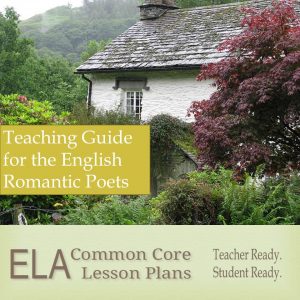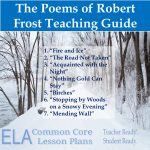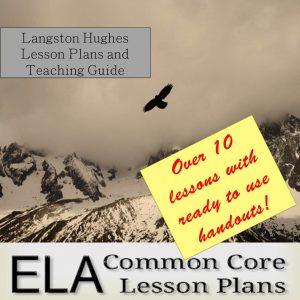Students need more than the definition of imagery to really get it. Understanding imagery involves interpreting and analyzing the author’s purpose for using a specific image or set of images. Good poetry centers around powerful images. These poets excel with imagery.
You’re busy. I don’t want to waste your time. Here’s a pdf download imagery lesson plan using the poems of Emily Dickinson. I’m pretty sure if you keep reading, your time sacrifice will be rewarded.
Imagery Basics
Teach students how to annotate and analyze a poem before focusing on one specific element. There are multiple levels of understanding imagery. Your lesson plans should incorporate the following:
- The definition of imagery: I thought I was pretty cool in high school because I knew that imagery was the use of vivid or figurative language to represent objects, actions, or ideas. No one else though I was cool except for my English teacher who gave me an ‘A’ on my literary terms matching quiz. Then I realized simply knowing a definition means nothing.
- Identifying imagery: Being able to identify imagery raises one above the level of primates, but it still falls short of mastery.
- Interpreting imagery: Explaining why the author chooses a particular image and what effect it has on the poem’s theme puts one in the upper echelon of poetry analysts.
- Using imagery: Being able to use imagery to convey more clearly a specific message equates to mastery.
Exemplary Poets for Teaching Imagery

With 19 poems and 89 pages of solid gold lesson plans and other items, there’s easily enough here for a 2-4-week unit.
- William Wordsworth - Wordsworth’s poems suggests that being one with nature equates to being one with the Universe or God. “I Wandered Lonely as a Cloud” provides an excellent example of this important theme in British Romanticism.
- William Blake - Let’s stick with the English Romantic poets for teaching imagery. Blake’s “Tyger,” “Lamb,” and two versions of “The Chimney Sweeper” are a good place to start.
- Samuel Taylor Coleridge. Teach Coleridge with caution. It’s difficult to comprehend for neophyte poetry scholars. If you’re really looking to challenge students (and yourself), teach “Rime of the Ancient Mariner.”
Teach the poems of Langston Hughes with this 2-3 week unit. This unit includes lesson plans, graphic organizers, answer keys, rubrics, analysis, a quiz, and more.
Langston Hughes - If you want poems that demonstrate the power of figurative language in creating imagery, Langston Hughes’ “Dreams” and “What Happens to a Dream Deferred” make excellent examples.- Edgar Allan Poe - Poe’s poetry serves as an example for just about every element of poetry. Imagery is no exception.
- Emily Dickinson. Dickinson is a master of images.
- Robert Frost. Any discussion of American poets must include Robert Frost. Frost’s “Stopping by Woods on a Snowy Evening,” “Birches,” and “Fire and Ice” provide ample examples of imagery.
Standards Covered

Teach the poems of Robert Frost with this 1-2 week unit. Lessons cover Frost’s Bio, Imagery, Theme, Symbolism, Figurative Language, Irony, Poetry Annotation, and more.
- RL.9-10.1 Cite strong and thorough textual evidence to support analysis of what the text says explicitly as well as inferences drawn from the text.
- RL.9-10.2 Determine a theme or central idea of a text and analyze in detail its development over the course of the text, including how it emerges and is shaped and refined by specific details; provide an objective summary of the text.
- RL.9-10.4 Determine the meaning of words and phrases as they are used in the text, including figurative and connotative meanings; analyze the cumulative impact of specific word choices on meaning and tone (e.g., how the language evokes a sense of time and place; how it sets a formal or informal tone).
- RL.9-10.10 By the end of grade 9, read and comprehend literature, including stories, dramas, and poems, in the grades 9-10 text complexity band proficiently, with scaffolding as needed at the high end of the range. By the end of grade 10, read and comprehend literature, including stories, dramas, and poems, at the high end of the grades 9-10 text complexity band independently and proficiently.

Speak Your Mind